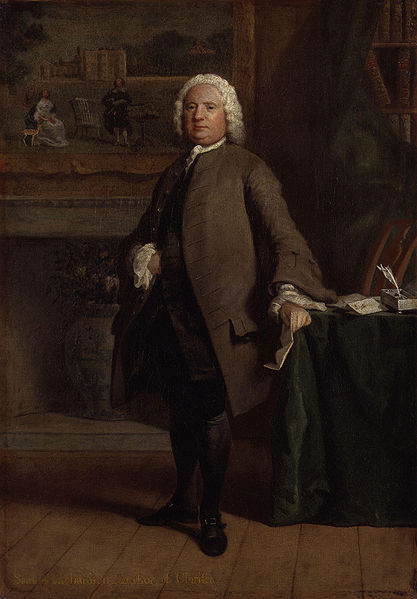The History of Sir Charles Grandison
The History of Sir Charles Grandison, commonly called Sir Charles Grandison, is an epistolary novel by English writer Samuel Richardson first published in February 1753. The book was a response to Henry Fielding's The History of Tom Jones, a Foundling, which parodied the morals presented in Richardson's previous novels. The novel follows the story of Harriet Byron who is pursued by Sir Hargrave Pollexfen. After she rejects Pollexfen, he kidnaps her, and she is only freed when Sir Charles Grandison comes to her rescue. After his appearance, the novel focuses on his history and life, and he becomes its central figure.
Samuel Richardson reading aloud the manuscript of Sir Charles Grandison to a group of friends in 1751. Coloured Engraving by Miss Highmore. National Portrait Gallery, Westminster, England.
Samuel Richardson was an English writer and printer known for three epistolary novels: Pamela; or, Virtue Rewarded (1740), Clarissa: Or the History of a Young Lady (1748) and The History of Sir Charles Grandison (1753). He printed almost 500 works, including journals and magazines, working periodically with the London bookseller Andrew Millar. Richardson had been apprenticed to a printer, whose daughter he eventually married. He lost her along with their six children, but remarried and had six more children, of whom four daughters reached adulthood, leaving no male heirs to continue the print shop. As it ran down, he wrote his first novel at the age of 51 and joined the admired writers of his day. Leading acquaintances included Samuel Johnson and Sarah Fielding, the physician and Behmenist George Cheyne, and the theologian and writer William Law, whose books he printed. At Law's request, Richardson printed some poems by John Byrom. In literature, he rivalled Henry Fielding; the two responded to each other's literary styles.

1750 portrait by Joseph Highmore
Portrait of Samuel Richardson by Joseph Highmore. National Portrait Gallery, Westminster, England.
Samuel Richardson reading aloud the manuscript of Sir Charles Grandison to a group of friends in 1751. Coloured Engraving by Miss Highmore. National Portrait Gallery, Westminster, England.
Title page of Pamela





